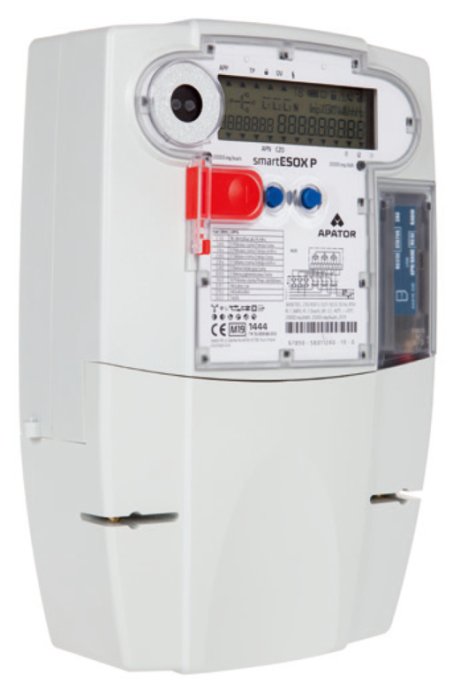Three-phase electricity meter
Multi-tariff, four-quadrant electricity meter
- Measurement of active, reactive and apparent energy
- Direct, semi-direct and indirect connection through current transformers, optionally also through voltage transformers
- Three built-in communication ports: one optical, two serial
- Provides full compatibility with smart systems
Application
Multi-tariff, four-quadrant electricity meter in three-phase, three- or four-wire networks for HV-, MV- or LV-powered consumers of all tariff groups. Extended measuring and registering functionality is complemented by multiple communication options. It is an optimal solution for advanced power management systems (EMS). Typical use: commercial/industrial meter; balancing meter.
Features
- Measurement of active, reactive and apparent energy
- Measurement of instantaneous, maximum, redundant and cumulative power
- Measurement of transformer losses: OLA, NLA, OLR, NLR, I²t, U²t
- Measurement of network parameters, including: voltages, currents, voltage and current harmonics, frequencies, THD, assymetry factor and neutral wire current
- Monitoring of power grid parameters: voltage dips and swells; long power outages; current and voltage asymmetry; current flow with no applied voltage; no current flow; exceeded current limit
- Direct, semi-direct and indirect connection through current transformers, optionally also through voltage transformers
- Recording of energy in six tariff zones, switched by a built-in real time clock
- Wide range of recording capabilities for measured parameters:
- independently configurable profiles with different recording intervals
- ability to configure a different set of recorded data for each profile
- Enhanced event logging
- 7 groups of events, recorded in independent logs
- sending immediate event notifications to the host device/system
- Wide range of recording capabilities for measured parameters in reference periods
- up to 50 parameters recorded in reference periods
- DLMS/COSEM communication protocol, possibility to read measurement data through the PN-EN 62056-21 (IEC1107) protocol
- Three built-in communication ports: one optical, two serial
- Interchangeable communication module: 3G/GPRS or Ethernet
- Built-in emergency power supply connected to an external power source
- Ability to read energy registers on the display in case of power outage – powered by a replaceable AA battery.
- Ability to read profiles and reference periods on the LCD
- 123
- 234
- gfdg
- 544
